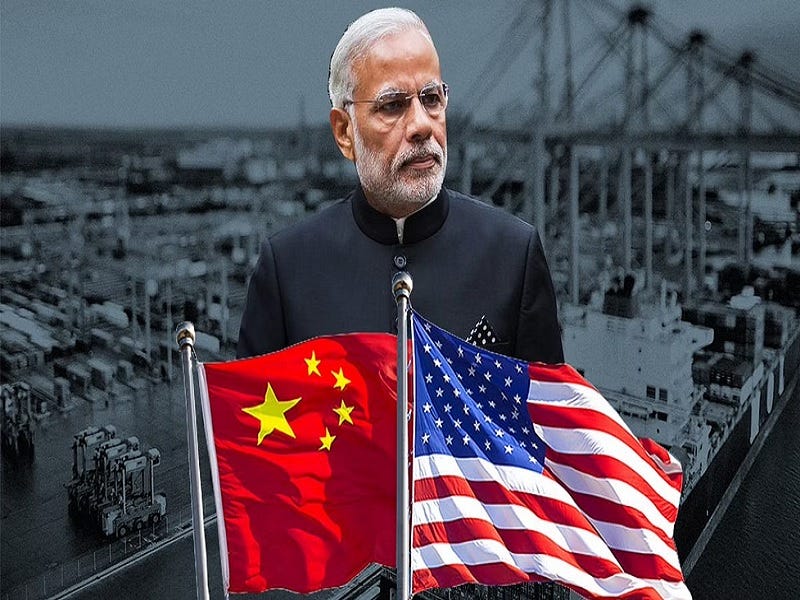Explaining India’s Balancing Act Between BRICS & The G7
Pretty much, what India’s attempting to do is use its close geo-economic ties with the US-led G7 and unofficial BRICS leader China to balance its ties with both, all with a view towards maximizing its strategic autonomy in the New Cold War between the former’s Golden Billion and the latter’s Global South.
Indian Prime Minister Modi is in Germany to attend the G7 as one of several partner countries invited by its host to participate in this year’s gathering, which comes a week after he took part in this year’s virtual BRICS Summit that saw over a dozen partners like Ethiopia and Iran attending as well. The first-mentioned bloc represents the US-led West’s Golden Billion while the second one clearly comprises the Global South, which are the two systemic rivals of the New Cold War. By keeping a foot in each camp, India is trying to balance between its geo-economic interests, all in pursuit of its desire to become a third pole of influence in the bi-multipolar intermediary phase of the global systemic transition to multipolarity.
While Russian Duma Speaker Volodin is correct in concluding that the “Big Eight” multipolar economies outcompete the G7, the latter is still nothing to scoff at. They’re much more closely integrated with one another and key nodes across the Global South, the last of which includes India, which Volodin also considers part of the Big Eight. The Indian diaspora has helped build very important bridges between their traditional and new homelands, which serve as the basis for more comprehensive geo-economic ties. So long as the G7 aren’t demanding that India unilaterally concede on issues that its leadership considers to be in their objective national interests, then it has no problem taking their trade and investment ties as far as possible.
As for BRICS, it’s the most meaningful multilateral engine of the emerging Multipolar World Order since its Russia-India-China (RIC) core has the potential to make serious contributions to gradually reforming the Western-centric model of globalization into one centered on the Global South. This grand strategic goal serves India’s objective national interests since it would strengthen its economic sovereignty by restoring balance to its ties with the G7 as a whole. China is also India’s top trade partner in spite of occasional geopolitical tensions between them stemming from unresolved territorial disputes along their shared frontier, yet India also hopes to leverage its economic relations with the G7 in order to also maintain a balance in this relationship as well.
Pretty much, what India’s attempting to do is use its close geo-economic ties with the US-led G7 and unofficial BRICS leader China to balance its ties with both, all with a view towards maximizing its strategic autonomy in the New Cold War between the former’s Golden Billion and the latter’s Global South. Each plays a distinct role in this paradigm but neither are necessarily at the expense of the other. After all, India truly seeks mutually beneficial trade with every one of its partners and doesn’t accept being anyone’s “junior partner” in any respect. Its trade ties with one partner don’t affect those with another, which is why it’s been able to balance between the G7 and China for as long as it already has and hopes to do so indefinitely.
The larger trend is that economic diplomacy is more confidently being wielded by India alongside its traditional, military, and energy variants to create a comprehensive toolkit for navigating the increasingly complex and ever-changing contours of the global systemic transition to multipolarity. It’s thus far succeeded in reaping mutual benefits from all partners and seems likely to continue along this trajectory. The way in which this trend has unfolded with respect to balancing between the G7 and unofficial BRICS leader China further heightens India’s importance in the evolving international environment since it’s impressively being courted by both geo-economic blocs of the New Cold War due to its irreplaceable role as a balancing force for all key players.




